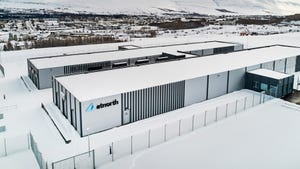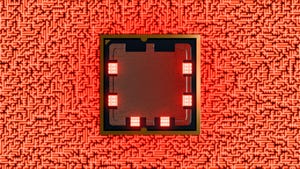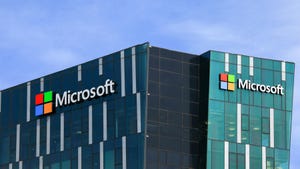The Pros and Cons of Wind Power for Data Center Sustainability
Discover the nuances of leveraging wind power for data centers, weighing its efficiency and reliability benefits against other sustainable solutions.

Wind may seem like a great energy source for data centers – and it is, in many respects. But wind power also has some downsides, including but not limited to the fact that wind tends to be intermittent.
So, before turning to wind to power your data center renewable energy strategy, it's important to understand the pros and cons of this power source. Keep reading for a dive into when it does and doesn't make sense to rely on wind for data center energy.
The Advantages of Wind Power for Data Centers
Wind power offers some distinct benefits compared to other renewable energy sources that can power data centers.
For starters, wind is considerably more efficient than the other major source of renewable data center energy: solar. You'd need to install nearly 50,000 solar panels to produce the same amount of energy emitted by a single standard wind turbine.
For another, wind offers the benefit of being capable of producing power at any time of day – provided it's windy. Solar power only works during sunny daylight hours.
On top of this, because wind can produce electricity, it provides an all-purpose energy source that can power IT equipment as well as cooling systems. This makes wind advantageous compared to geothermal energy, which is typically only used by data centers for cooling purposes. Geothermal electricity production is possible, too, but it requires building geothermal power plants, which are much more expensive than installing wind turbines.
The fact that the world is growing windier is also a point in wind power's favor. Average wind speeds have increased by about 5% over the past two decades as storms have become more frequent. If that trend continues, wind power will become an even more attractive investment.
The Limitations of Wind Power for Data Centers
Wind power for data centers isn't perfect. Perhaps the most obvious drawback of wind energy is that wind is intermittent and unpredictable. That's one of the reasons why wind and other renewables (like solar, which is also not consistently available) are often not sufficient for powering data centers totally on their own.
Wind turbines must also typically be installed in remote locations, for several reasons. First, real estate in highly developed areas is often too expensive to serve as a realistic site for a wind farm. Second, wind tends to be stronger in rural locations, where man-made structures are not a major obstacle to currents.
In addition, wind turbines can be loud and unsightly, leading to pushback from local residents when developers propose wind farms in densely populated areas.
Some data centers are also located in remote areas, so building wind farms close to them is not a major challenge. But data centers that businesses build in dense regions – a practice that can help reduce latency by placing workloads closer to concentrations of users – are likely to find it more challenging to benefit from wind power.
Data Centers Using Wind Power
Overall, it seems that some of the world's largest data center operators believe the benefits of wind power outweigh the drawbacks, as they have invested significantly in wind as a power source for their facilities.
Google purchased 50MW of wind power for data centers in Europe in 2021. Meta also has a track record of betting on wind power. And Equinix recently announced a wind energy project in Sweden.
On balance, it's worth noting that smaller-scale data center operators don't tend to be major investors in wind power – perhaps because they don't face as much pressure to make public commitments to renewable energy, and perhaps also because they lack the financial resources of large tech companies, which can afford to sign agreements to source energy using wind farms even if solar or non-renewable energy sources make more financial sense.
Nonetheless, it's clear that there is a sustained and growing trend in wind energy within the data center industry.
The Future of Wind-Powered Data Centers
The bottom line is that wind makes more sense as an energy source for some data centers than others. Data centers located in areas where wind farms are easy and cost-efficient to construct, and where wind currents are more consistent, stand to benefit more from wind.
Larger data center operators who prioritize wind and other renewables as part of their ESG strategies may also find it easier to justify investments in wind projects.
On the other hand, there is less reason to expect wind to become a key power source for data centers in urban areas, or those owned by operators who require the greatest ROI on their energy sourcing.
About the Author
You May Also Like









